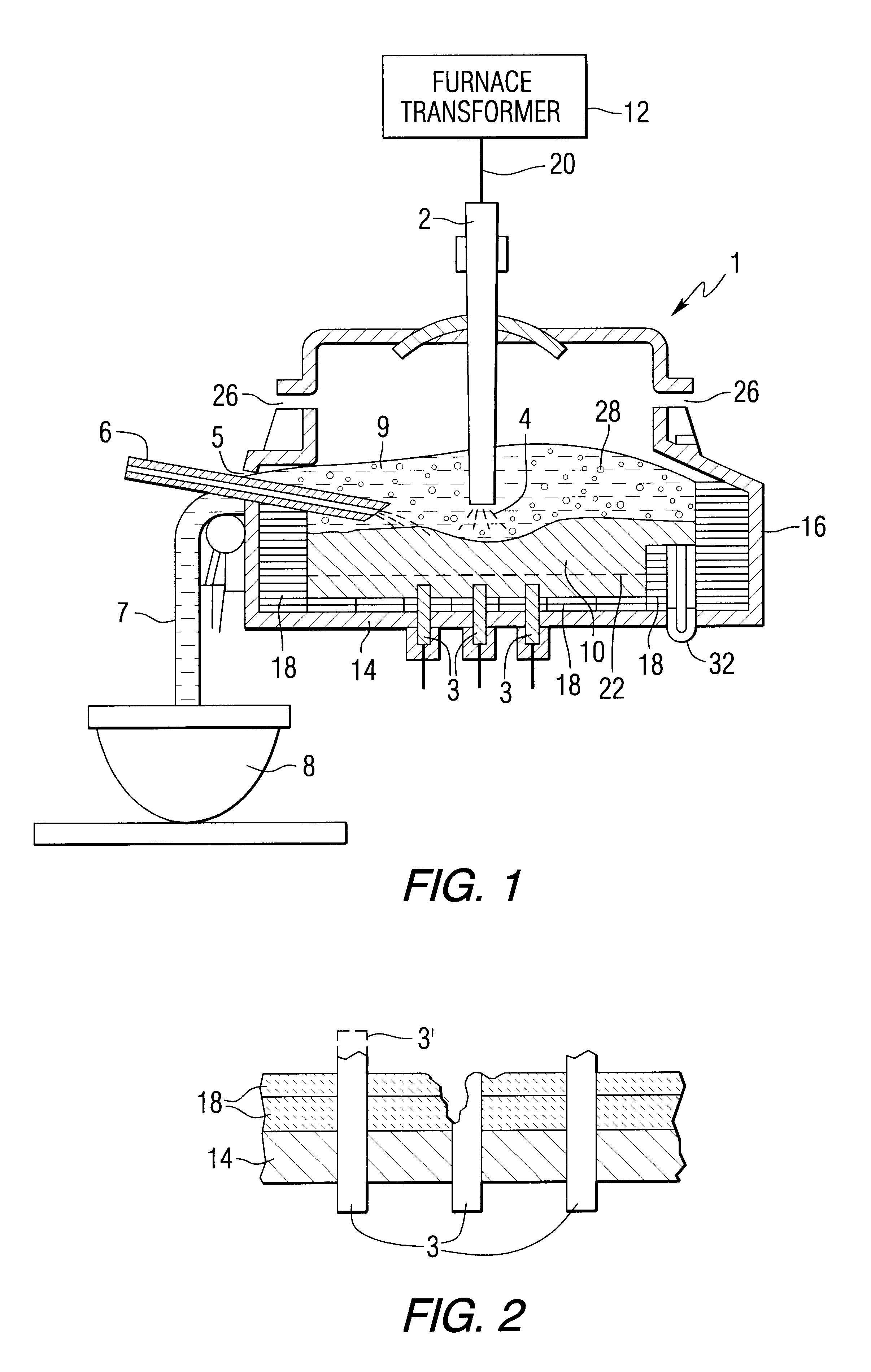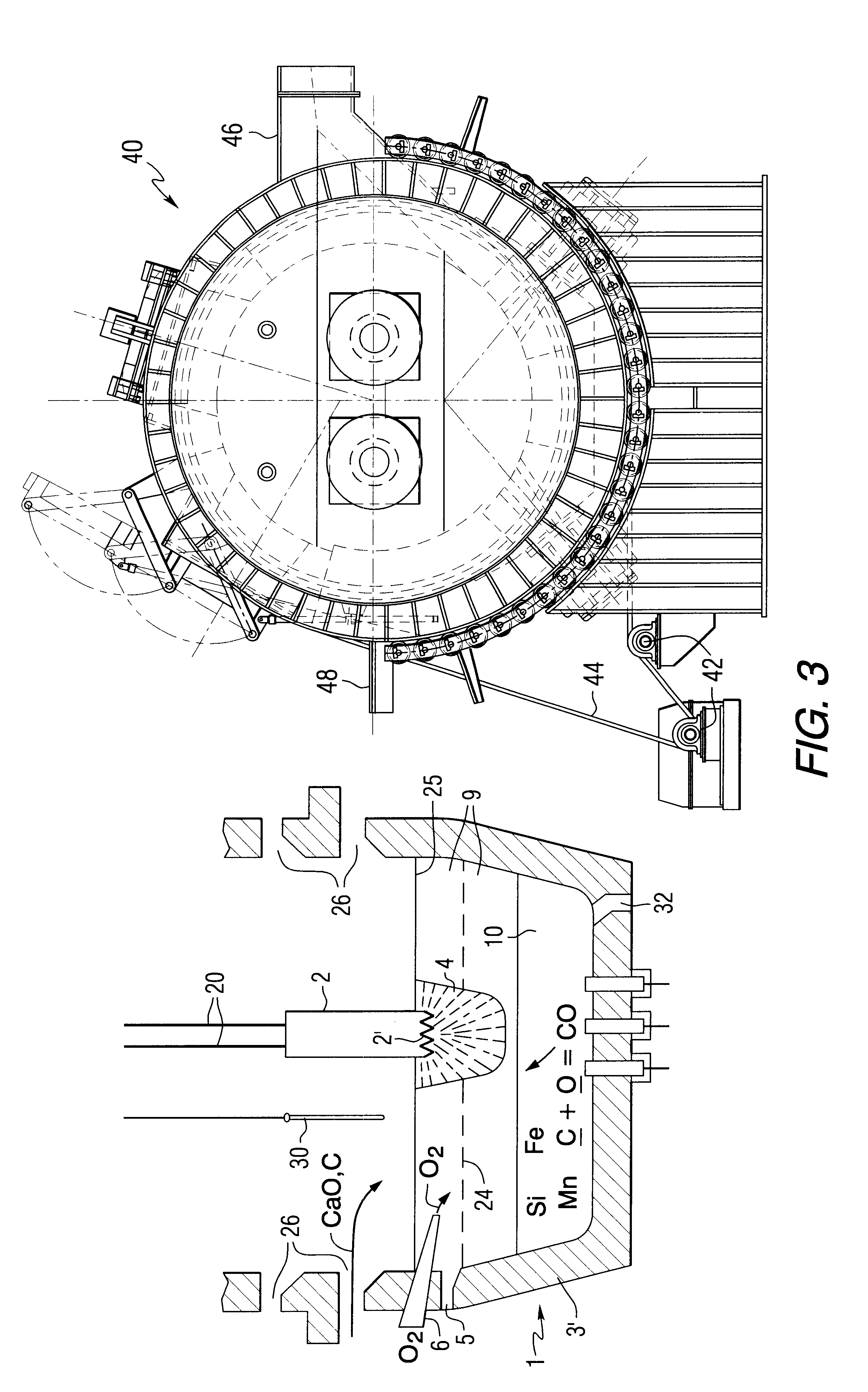Method to protect the anode bottoms in batch DC electric arc furnace steel production
- Summary
- Abstract
- Description
- Claims
- Application Information
AI Technical Summary
Problems solved by technology
Method used
Image
Examples
Embodiment Construction
This example involves using DC electric arc furnace with a capacity of 160 tons as shown generally in FIG. 1, where low carbon steel is manufactured, where the outlet for slag is completely closed, and where at the end of heating, melting, superheating, and refining a heat of low carbon steel, the molten steel is completely tapped from the furnace and the slag is tapped off through a charging door. At the beginning of the batch, a high carbon hot metal heel is added to the empty furnace having a high carbon content of about 4.0 wt % having a temperature over 1450.degree. C. Ladling in of the hot metal from a channel induction furnace can be while the furnace is level. After most of the hot metal is ladled in, the roof can be swung and the first charge of other raw materials such as scrap, pig iron, or HBI dropped. As soon as the roof is back in place, the arc is struck. With the more rapid establishment of a stable arc favored by formation of carbon monoxide from the high carbon in ...
PUM
| Property | Measurement | Unit |
|---|---|---|
| Fraction | aaaaa | aaaaa |
| Temperature | aaaaa | aaaaa |
| Concentration | aaaaa | aaaaa |
Abstract
Description
Claims
Application Information
 Login to View More
Login to View More - R&D
- Intellectual Property
- Life Sciences
- Materials
- Tech Scout
- Unparalleled Data Quality
- Higher Quality Content
- 60% Fewer Hallucinations
Browse by: Latest US Patents, China's latest patents, Technical Efficacy Thesaurus, Application Domain, Technology Topic, Popular Technical Reports.
© 2025 PatSnap. All rights reserved.Legal|Privacy policy|Modern Slavery Act Transparency Statement|Sitemap|About US| Contact US: help@patsnap.com



